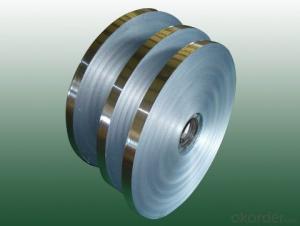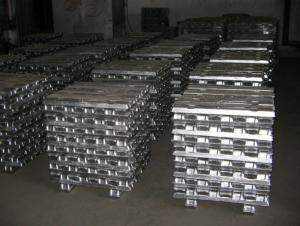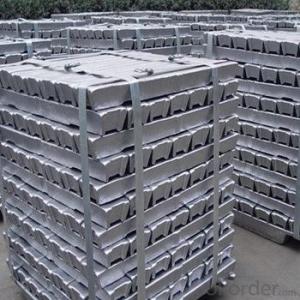Choice Aluminum Foil
Choice Aluminum Foil Related Searches
Led Light Bulbs For Ceiling Fixtures Led Lamps For Ceiling 42 In Ceiling Fan With Light Aluminum Coil Stock For Gutters Aluminum Foil For The Grill Hole Saw For Aluminum Plate Aluminum Tread Plate For Trailer Bow Plate For Aluminum Boat Aluminum Foil For Grow Room Aluminum Foil For Joint PainHot Searches
Stock Price For Aluminum Aluminum Coil Stock For Sale Aluminum Gutter Coil For Sale Used Aluminum Scaffolding For Sale 1/4 Aluminum Plate For Sale Aluminum Bar Stock For Sale Aluminum Round Stock For Sale Aluminum Diamond Plate For Sale Aluminum Scaffolding For Sale Craigslist 6061 Aluminum Plate For Sale Aluminum Dock Plate For Sale 7075 Aluminum Plate For Sale Aluminum Tread Plate For Sale Aluminum Checker Plate For Sale Aluminum Plate For Sale Near Me Plate Aluminum For Sale Aluminum Plate For Sale Aluminum Square Stock For Sale Aluminum Flat Stock For Sale Billet Aluminum Stock For SaleChoice Aluminum Foil Supplier & Manufacturer from China
Okorder.com is a professional Choice Aluminum Foil supplier & manufacturer, offers integrated one-stop services including real-time quoting and online cargo tracking. We are funded by CNBM Group, a Fortune 500 enterprise and the largest Choice Aluminum Foil firm in China.Hot Products
FAQ
- Yes, aluminum ingots can be customized for specific applications. Aluminum is a versatile material that can be alloyed with other elements to enhance its properties such as strength, corrosion resistance, and thermal conductivity. By carefully selecting the alloy composition and processing techniques, aluminum ingots can be tailored to meet the specific requirements of various applications ranging from automotive parts to aerospace components.
- Aluminum ingots are tested for quality through a series of quality control measures. These include visual inspections to check for any surface defects or impurities, measurements of dimensions and weight to ensure they meet the required specifications, and chemical composition analysis to verify the purity and alloy composition. Additionally, mechanical tests such as hardness and tensile strength assessments may be conducted to evaluate the ingot's structural integrity. These rigorous testing procedures ensure that only high-quality aluminum ingots are released for further processing and manufacturing.
- What are the advantages of the CNC process for aluminum and die cast aluminum?
- The main properties, namely strength, hardness and wear resistance, are in accordance with the national standard GB6063. The utility model has the advantages of light weight, only 2.8, no rust, fast design change, low die input and longitudinal elongation up to more than 10 meters. There is light, matte of aluminum processing appearance, the process of anodic oxidation treatment, surface treatment of oxide film thickness reaches 0.12m/m. The wall thickness of aluminum profile is chosen according to the optimization of product design. The thicker the market is, the better the design of sectional structure should be. It can be uneven in 0.5~5mm. Layman thinks that the thicker and tougher, it is the wrong view.
- What kind of material is die casting aluminium ingot?
- Material / model1, according to the content of aluminum ingot content is divided into1) advanced pure aluminum: aluminum content of 99.93%-99.999%2) industrial high-purity aluminum: aluminum content of 99.85%-99.90%3) industrial pure aluminium: the content of aluminium is 98.0%-99.7%2, remelting with aluminum ingot according to the chemical composition is divided into 6 grades: (Note: Al after the number is aluminum content)
- Sincerely ask predecessors to tell me about the processing of aluminum ingots to doors and windows, curtain walls, aluminum profiles, the general process and about the process!
- The first cast aluminum rod, generally with the same level hot top casting equipment, casting equipment Woge Gustave America more now.
- The quality standards for aluminum ingots are defined by various organizations and regulatory bodies to ensure the production of high-quality and consistent aluminum products. The following are some of the common quality standards for aluminum ingots: 1. Chemical Composition: The chemical composition of aluminum ingots is crucial in determining its mechanical properties and suitability for specific applications. Quality standards outline the acceptable ranges for elements such as aluminum, iron, silicon, copper, magnesium, and other impurities. 2. Purity: Aluminum ingots should meet specific purity requirements to ensure minimal impurities and contaminants. Standards typically set limits for impurities like oxides, alkali metals, and heavy metals to maintain the desired quality. 3. Physical Properties: Quality standards also cover various physical properties, including density, tensile strength, elongation, hardness, and thermal conductivity. These properties determine the ingot's performance in different applications and help manufacturers produce consistent, reliable aluminum products. 4. Grain Structure: The grain structure of aluminum ingots influences their mechanical strength and formability. Quality standards define the acceptable grain size and uniformity to ensure consistent properties within the ingots. 5. Surface Quality: The surface of aluminum ingots should be free from defects like cracks, voids, porosity, or excessive oxidation. Quality standards specify the acceptable limits for these defects to ensure the ingots' suitability for further processing. 6. Dimensional Tolerances: Standards also define the acceptable dimensional tolerances for aluminum ingots, including length, width, thickness, and weight. These tolerances ensure uniformity and compatibility with downstream manufacturing processes. 7. Packaging and Marking: Quality standards often include guidelines for appropriate packaging and marking of aluminum ingots to prevent physical damage, corrosion, or mix-ups during transportation and storage. It is important to note that specific quality standards may vary depending on the industry and intended use of the aluminum ingots. Manufacturers and customers should refer to relevant standards organizations, such as the International Organization for Standardization (ISO) or the American Society for Testing and Materials (ASTM), to ensure compliance with the appropriate quality requirements.
- Aluminum ingots are used in the production of automotive parts as they are melted and cast into specific shapes to create components such as engine blocks, cylinder heads, wheels, and transmission housings. The lightweight and high strength properties of aluminum make it an ideal material for improving fuel efficiency, enhancing performance, and reducing overall vehicle weight. These ingots are processed through various techniques like casting, forging, and machining to manufacture durable and efficient automotive parts.
- There are several benefits of using aluminum ingots in the construction of lightweight structures. Firstly, aluminum is a lightweight metal, making it an ideal choice for constructing lightweight structures. It has a density that is approximately one-third of steel, allowing for the creation of structures that are significantly lighter in weight. This is particularly advantageous in industries such as aerospace, automotive, and marine, where reducing weight is crucial for improving fuel efficiency and overall performance. Secondly, aluminum is highly corrosion-resistant. Unlike other metals, such as steel, aluminum does not rust when exposed to moisture or other corrosive elements. This makes it an excellent choice for structures that are exposed to harsh environmental conditions, such as buildings near the coast or in areas with high humidity. By using aluminum ingots, the structures can withstand corrosion, ensuring their longevity and reducing maintenance costs. Furthermore, aluminum is a highly malleable material, allowing for greater design flexibility. It can be easily shaped and formed into various complex geometries, enabling architects and engineers to create innovative and aesthetically pleasing structures. This versatility in design also allows for efficient use of materials, reducing waste and maximizing the structural integrity of the lightweight construction. Another significant benefit of using aluminum ingots is their excellent strength-to-weight ratio. Despite being lightweight, aluminum structures can still possess impressive strength and durability. This makes them suitable for applications where both strength and weight reduction are essential, such as in the construction of aircraft, high-rise buildings, and bridges. Additionally, aluminum is a sustainable material as it is highly recyclable. It can be melted down and reprocessed repeatedly without losing its properties, making it an environmentally friendly choice. By using aluminum ingots, construction projects can contribute to the circular economy and reduce the demand for new raw materials. In conclusion, the use of aluminum ingots in the construction of lightweight structures offers numerous benefits. These include reduced weight, corrosion resistance, design flexibility, excellent strength-to-weight ratio, and sustainability. Incorporating aluminum into construction projects can lead to improved performance, increased efficiency, and reduced environmental impact.














































